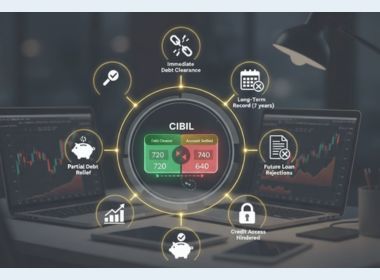Search Suggestions
- Gold Loan
- Money Transfer
- Mutual Funds

NPS vs. Unified Pension Scheme: What's the Difference?
As India continues to evolve in terms of financial security for its citizens, pension schemes have become more significant. Two prominent pension schemes—National Pension System (NPS) and Unified Pension Scheme (UPS)—have been in the spotlight for offering financial stability post-retirement. While both aim to help individuals secure their future after retirement, they differ significantly in their structure, benefits, and target audiences.
Table of Content
- What is the Unified Pension Scheme?
- NPS vs UPS: Key Differences
- Benefits of the Unified Pension Scheme
- Conclusion
The National Pension Scheme (NPS), a voluntary retirement saving scheme introduced by the Government of India, has grown in popularity, especially among employees in the government and private sectors.
On the other hand, the Unified Pension Scheme (UPS) is designed primarily for the employees of public sector undertakings (PSUs) and those in the state government sector, unifying their pension system for better management and accessibility. Understanding the differences between NPS and UPS can guide individuals in making an informed decision about where to invest their hard-earned money. While NPS offers flexibility, portability, and a variety of investment options, UPS, by consolidating multiple pension schemes into one, offers comprehensive benefits for state government employees.
This blog delves deeper into NPS vs. UPS, comparing their benefits, eligibility, and overall impact on an individual's financial security.
What is the Unified Pension Scheme?
The Unified Pension Scheme (UPS) was introduced to address the pension needs of employees working under various state governments and PSUs. It consolidates multiple pension schemes into a single, unified system, providing a streamlined approach to retirement savings.
The objective of the Unified Pension Scheme is to offer transparency, portability, and uniformity in managing pensions for government employees across different states and PSUs. By offering a comprehensive pension plan, UPS helps government employees maintain a secure and stable income post-retirement.
Suggested Read: NPS Scheme Details: Everything You Need to Know About This Retirement Plan
NPS vs UPS: Key Differences
Target Audience:
NPS: Primarily open to all Indian citizens, both in the private and public sectors, NPS is voluntary for those in the private sector but mandatory for government employees (except for the armed forces).
UPS: Exclusively designed for employees of state governments and PSUs, the Unified Pension Scheme caters to the specific needs of public sector workers.
Contribution Structure:
NPS: Involves contributions from both the employee and the employer. Employees can contribute as little as ₹500 per month, with the government matching contributions for central government employees.
UPS: In the case of UPS, the contribution structure is also typically shared between the employee and employer, but the specifics vary from state to state and depend on the public sector unit.
Portability:
NPS: One of the significant advantages of NPS is its portability. The scheme allows individuals to move their pension account from one job to another, making it ideal for those working in the private sector or for those who frequently switch jobs.
UPS: While UPS offers portability within government sectors, it is less flexible than NPS when it comes to transferring pension accounts between different sectors or states.
Pension Payout:
NPS: The pension payout from NPS depends on the accumulated corpus, and the amount is determined by the performance of the underlying investments. NPS allows individuals to take up to 60% of the corpus as a lump sum at the time of retirement.
UPS: The pension payout under UPS is more predictable since it’s linked to the employee's salary and years of service. The UPS typically ensures a defined pension for employees.
Investment Options:
NPS: Offers a range of investment options across equity, government securities, and corporate bonds. Investors have the freedom to choose their investment mix based on risk preferences.
UPS: Being a government-backed scheme, the Unified Pension Scheme does not offer as much flexibility in investment options. The returns are typically pre-defined and not dependent on market performance.
Benefits of the Unified Pension Scheme
- Standardization Across Sectors: The UPS ensures a uniform pension system for all state government employees and those working with PSUs, reducing disparities across states.
- Centralized Pension Management: By bringing together multiple pension schemes, UPS simplifies the administration and management of pensions for public sector employees.
- Higher Retirement Security: With defined pension benefits, employees can rely on a predictable source of income post-retirement, which provides financial stability.
- Government Backing: Since UPS is a government-sponsored initiative, employees are assured that their contributions are secure and backed by the state.
Conclusion
Choosing between the NPS vs. UPS depends largely on your employment sector, financial goals, and preference for investment flexibility. While NPS offers more individual control over investments and is suitable for private-sector employees or those with multiple job changes, the Unified Pension Scheme provides a stable and predictable pension for public sector workers, offering long-term security. Understanding these key differences will help you make an informed decision about which pension scheme best suits your retirement planning needs.
- Insurance
- Group Insurance
- Health Insurance
- Home Insurance
- Vehicle Insurance
- Life Insurance
- Travel Insurance
- Shop Insurance
CATEGORIES
OUR SERVICES
-

Credit Score
-

Gold Loan
-

Personal Loan
-

Cibil Score
-

Vehicle Loan
-

Small Business Loan
-

Money Transfer
-

Insurance
-

Mutual Funds
-

SME Loan
-

Corporate Loan
-

NCD
-

PAN Card
-

NPS
-

Custom Offers
-

Digital & Cashless
-

Milligram Rewards
-

Bank Mapping
-

Housing Finance
-

#Big Business Loan
-

#Gold Loan Mela
-

#Kholiye Khushiyon Ki Tijori
-

#Gold Loan At Home
-

#Sunherisoch
RECENT POSTS

Gilt Fund vs Liquid Fund: Full Form, Meaning & SIP Guide
Know More
XIRR in Mutual Funds & SIP: Full Form, Meaning, Formula and How to Calculate
Know More
7 Key Factors to Consider Before Taking an SME Loan
Know More
Difference Between Black Gold and Gold: Everything You Need to Know
Know More
NPS vs EPF: Everything You Need to Know About Retirement Savings
Know More
What is a Credit History? Impact on Credit Score and Credit Report
Know More
Loan Closure Vs. Loan Settlement: Meaning, Benefits, and CIBIL Score Impact
Know More
Is Silver the New Gold? A Look at 2025 Price Trends
Know More
What Are the Various Types of Equity Funds and How They Work?
Know More
Why Are Gold Loans Becoming the Most Preferred Financial Option in 2025?
Know MoreFIN SHORTS

What Are Co-Pay and Deductibles in Insurance Policies?
Know More
Should You Take a Loan Against Your Mutual Fund or SIP?
Know More
Top 5 Best Mid-Cap Mutual Funds to Watch in 2026
Know More
Are Personal Loans Right for Retirees? Key Points to Consider
Know More
What Happens to a Personal Loan After the Borrower Dies?
Know More
Best Loan Choices for Credit Scores of 580 and Below
Know More
7 Reasons Why a Gold Loan Is the Best Option for Small Businesses
Know More
10 Reasons Why People in India Prefer Physical Gold
Know More
Real Estate vs Gold: Which Is a Better Investment in India?
Know More
10 Common Mistakes That Make Investors Lose Money in Mutual Funds
Know More
10 Reasons Why Gold Has So Much Appeal in Uncertain Times
Know More
7 Ways Settling Debt Can Impact Your CIBIL Score
Know More- South +91 99469 01212
- North 1800 313 1212




